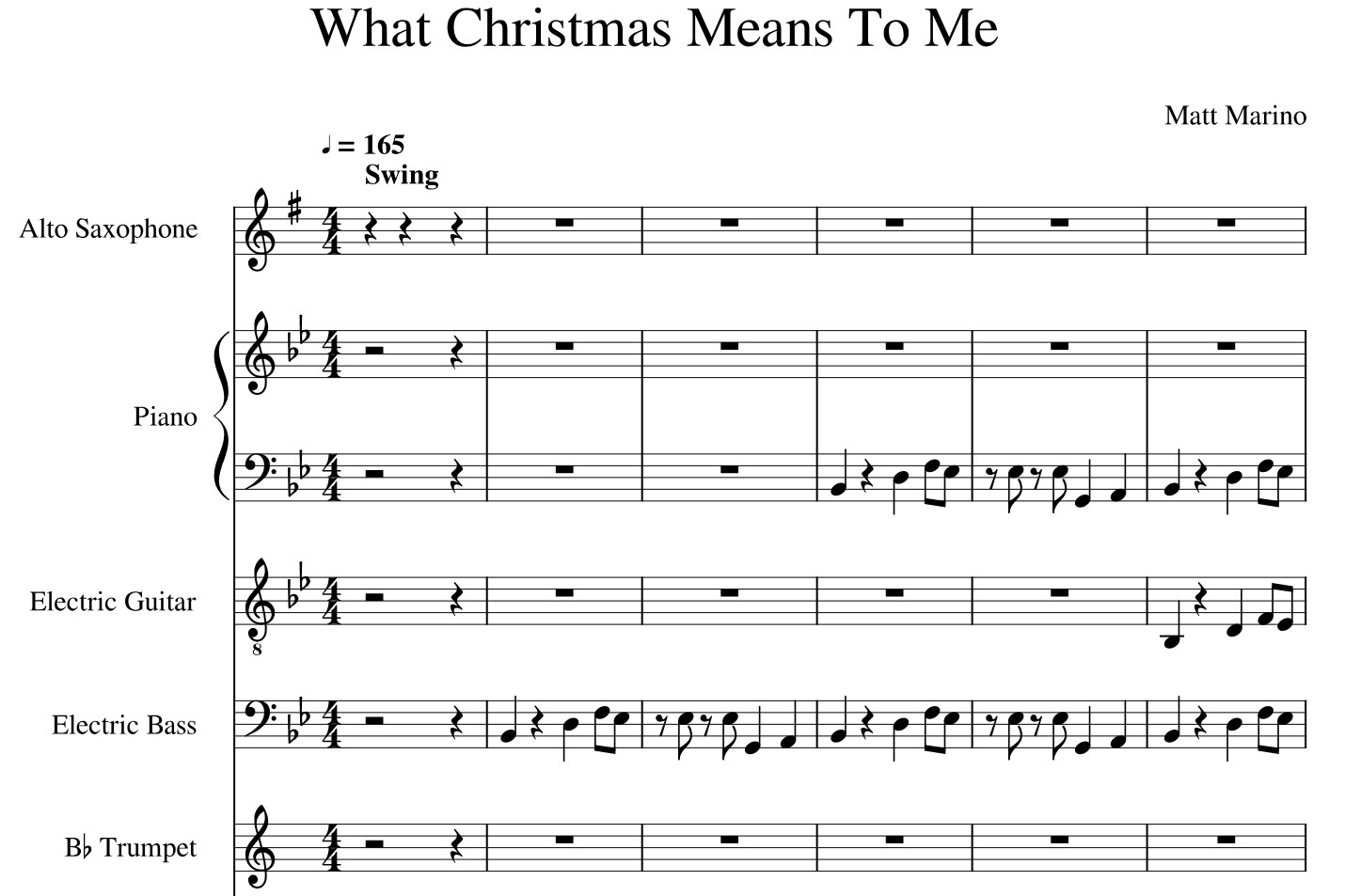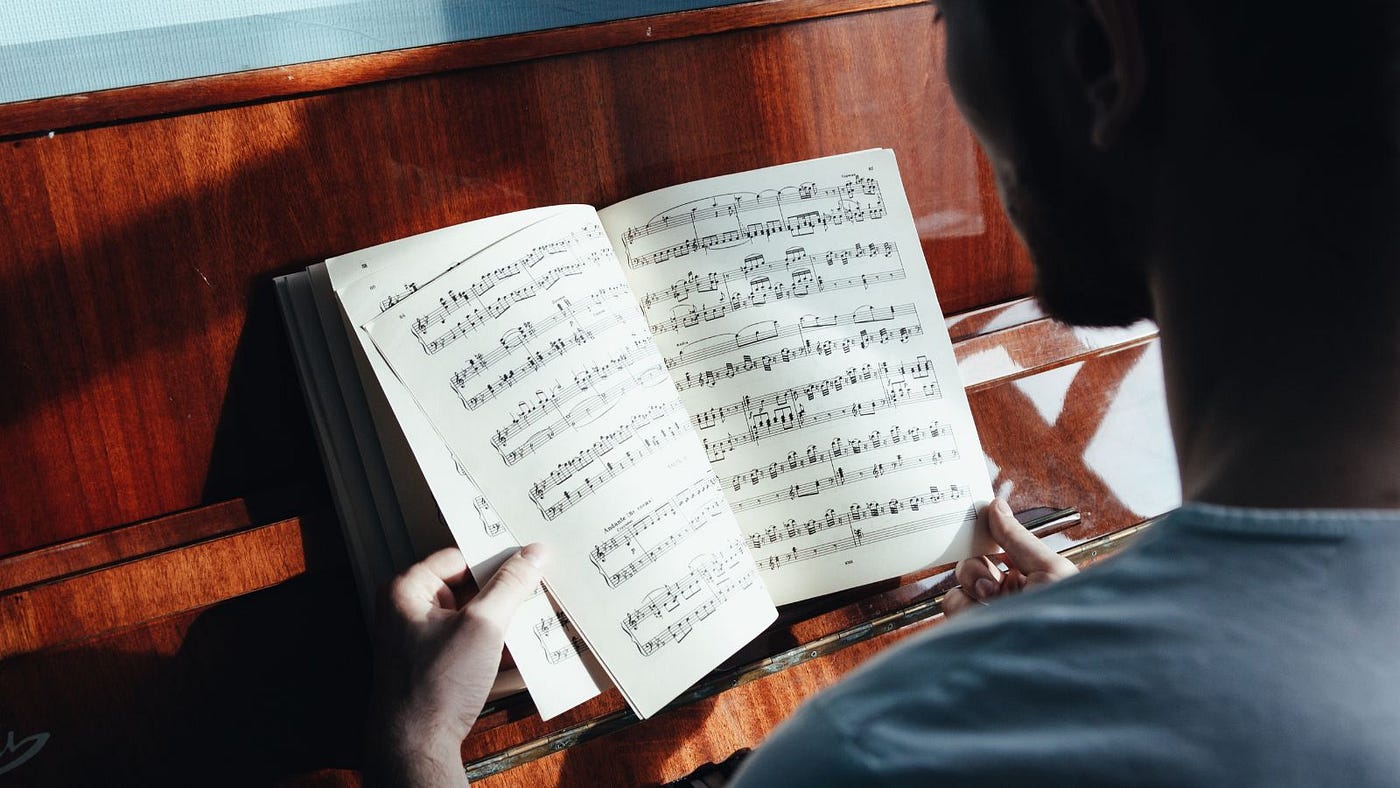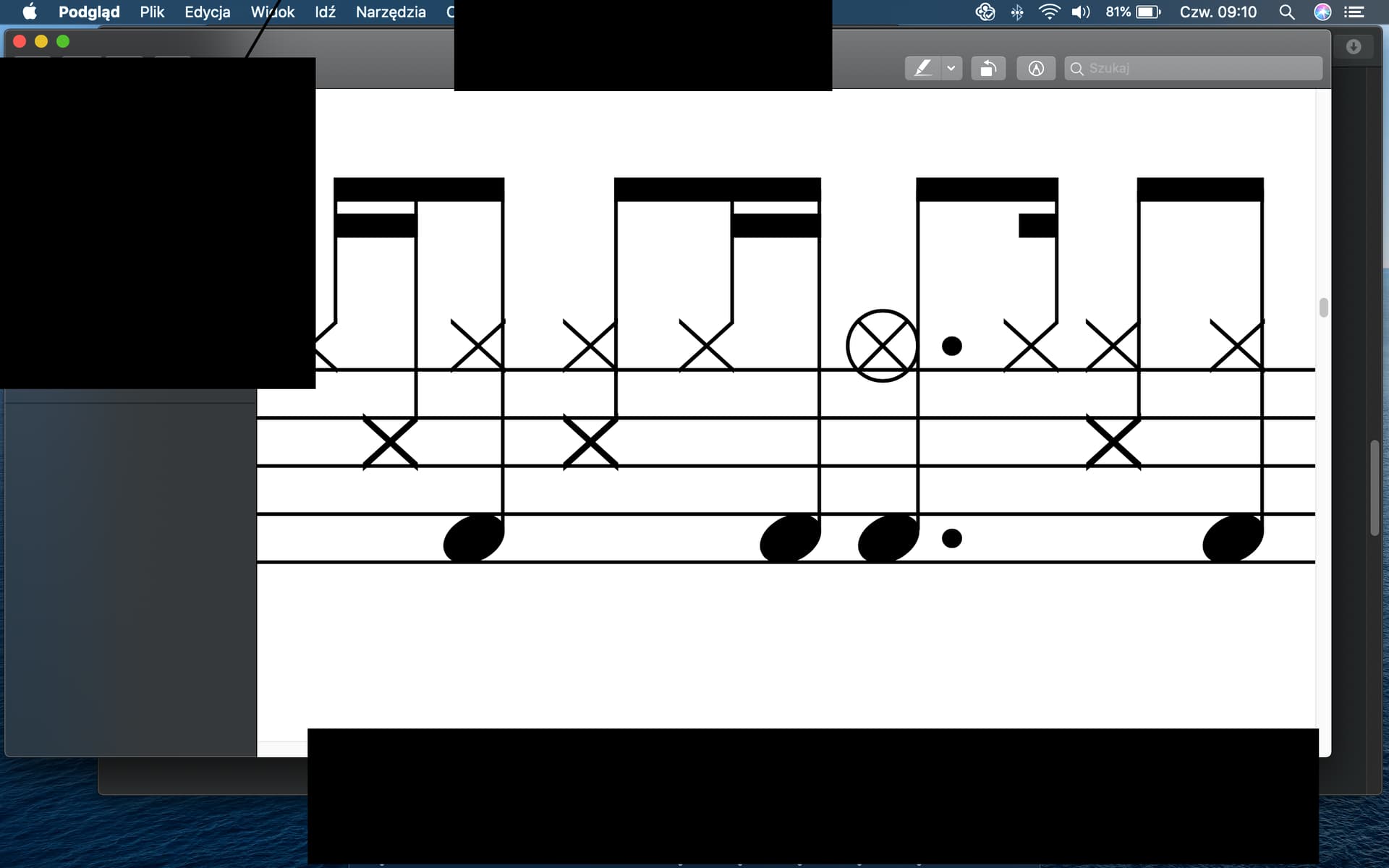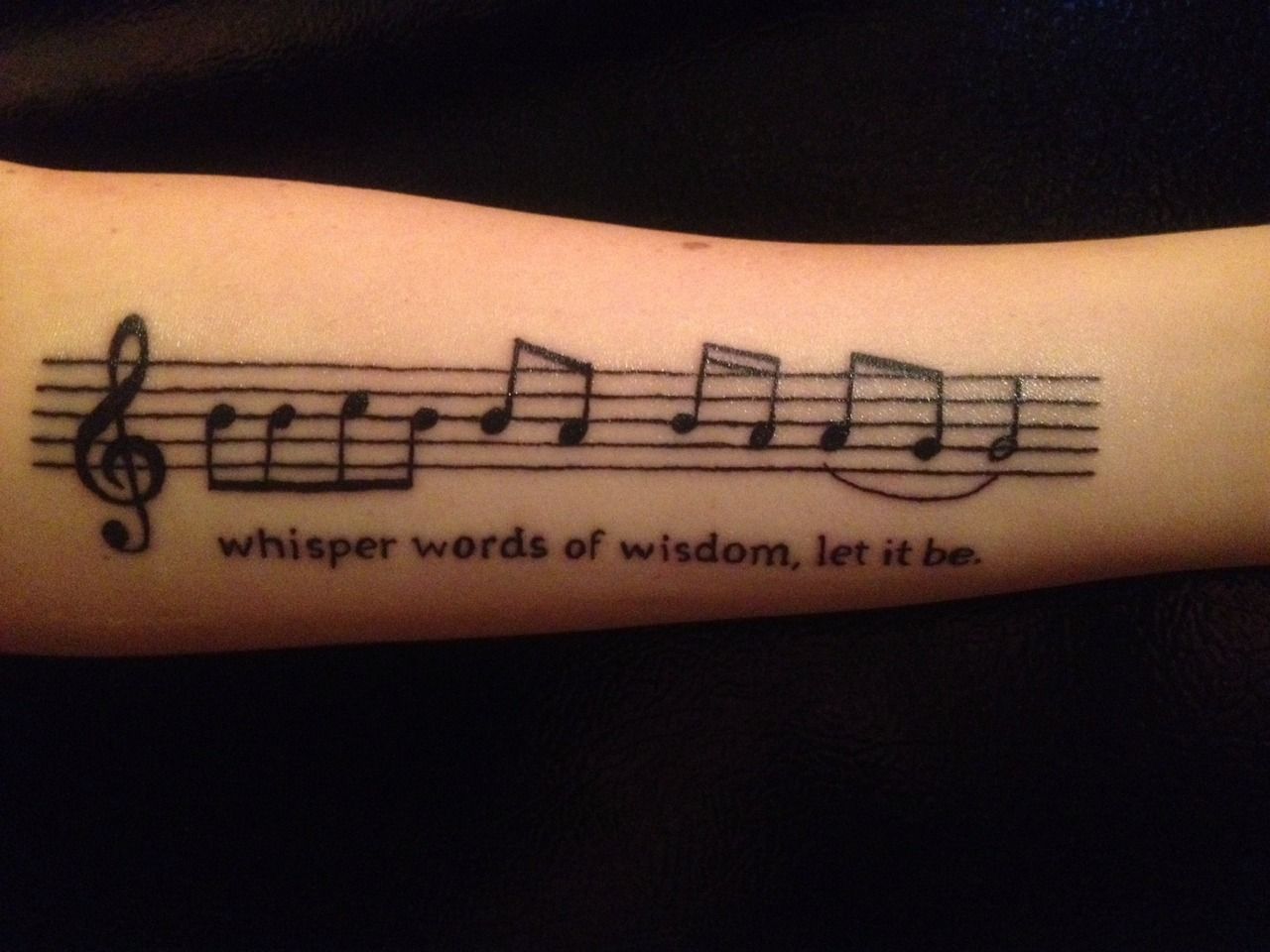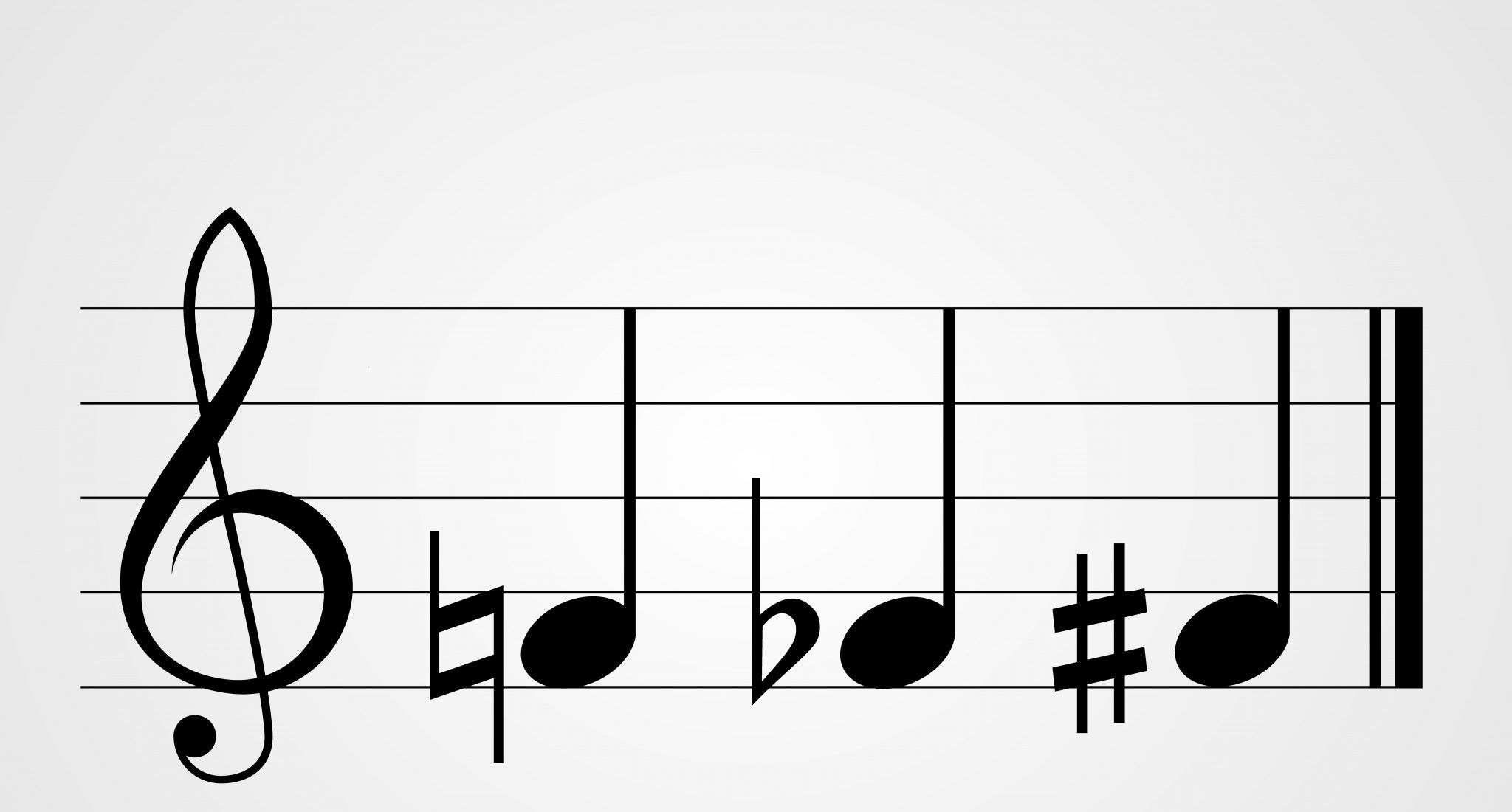Home>Production & Technology>Sheet Music>What Does The C Mean In Sheet Music


Sheet Music
What Does The C Mean In Sheet Music
Modified: January 29, 2024
Discover what the "C" stands for in sheet music and unlock the secrets of reading and interpreting notes. Enhance your understanding of sheet music with this comprehensive guide.
(Many of the links in this article redirect to a specific reviewed product. Your purchase of these products through affiliate links helps to generate commission for AudioLover.com, at no extra cost. Learn more)
Table of Contents
Introduction
Sheet music is a vital tool in the world of music. It serves as the written language that musicians use to interpret and perform their favorite songs. It is a notation system that communicates the pitch, rhythm, and various other musical elements that make up a piece of music. Understanding sheet music is crucial for anyone hoping to learn, play, or compose music.
However, for beginners, sheet music can seem overwhelming and confusing. The letters, symbols, and markings on the musical staff may appear mysterious and hard to comprehend. One particular letter that often raises questions is the letter “C.” What does the “C” mean in sheet music? Is it a specific note? Or does it stand for something else entirely?
In this article, we will explore the role of the letter “C” in sheet music and uncover its significance in musical notation. We will unravel the different interpretations and meanings that the “C” can have, shedding light on its importance in understanding and reading sheet music.
Understanding Sheet Music
Before diving into the meaning of the letter “C” in sheet music, it’s essential to have a basic understanding of how sheet music works. Sheet music is a written representation of musical notation and serves as a guide for musicians to perform a particular piece of music accurately. It consists of a series of symbols, notes, and instructions that convey the melody, rhythm, tempo, dynamics, and other musical elements.
The foundation of sheet music lies in musical staff, which consists of horizontal lines and spaces. Each line and space represents a different pitch. Notes are placed on the staff to indicate the specific pitch that needs to be played. Additionally, various symbols, such as sharps, flats, and naturals, are used to modify the pitch of a note.
Musical notation also includes rhythmic values, indicated by different note shapes and their corresponding durations. The combination of pitch and rhythm creates melodies and harmonies, which are the building blocks of music.
While sheet music includes many elements, the focus of this article is on the letter “C” and its role in sheet music. So, let us delve into this specific aspect further to better understand its significance in musical notation.
The Basics of Musical Notation
Musical notation is a system of symbols and marks used to represent musical sounds and their characteristics. It provides a standardized way for musicians to communicate and interpret music. Understanding the basics of musical notation is essential for reading and playing sheet music effectively.
The foundation of musical notation is the musical staff. It consists of five horizontal lines and four spaces. Each line and space represents a specific pitch. The lowest line is typically reserved for the note E, and each subsequent line and space represents a letter from the musical alphabet: F, G, A, B, C, D, and so on. This pattern repeats throughout the staff.
The pitches on the staff are represented by notes. Notes are oval-shaped symbols placed on the lines and spaces of the staff. The position of a note on the staff indicates its pitch. For example, notes placed on the bottom space represent lower pitches, while notes on the top line represent higher pitches.
In addition to the position on the staff, the duration of a note is also indicated by its shape. Notes can be whole notes, half notes, quarter notes, eighth notes, and so on, each having a specific duration value. Rests, which are symbols indicating periods of silence, are also used to denote pauses in the music.
Other symbols and markings are used to convey various musical elements such as dynamics (volume), tempo (speed), articulation (how the notes are played), and expression. These symbols and marks provide instructions to the performer to interpret the music accurately.
Now that we have covered the basics of musical notation, let’s move on to understanding the role of lettered notes and, in particular, the letter “C,” in sheet music.
The Role of Lettered Notes
Letter notation is an integral part of sheet music. It helps musicians identify and locate specific pitches on the musical staff. Each letter of the musical alphabet corresponds to a specific pitch, allowing musicians to read and play music accurately.
The lettered notes in sheet music are named after the first seven letters of the alphabet: A, B, C, D, E, F, and G. These letters represent specific pitches in the musical scale. The lettered notes are placed on the lines and spaces of the staff, indicating their pitch and position within the music.
Musicians rely on lettered notes to play the correct pitches and create melodies. Each lettered note represents a specific key on a musical instrument or a specific vocal pitch. By understanding and interpreting the lettered notes on the staff, musicians can recreate the composer’s intended melody and harmonies.
The use of lettered notes makes sheet music accessible to musicians of various instruments and backgrounds. Whether you’re a pianist, guitarist, flutist, or vocalist, the lettered notes provide a universal language that allows musicians to share and perform music across different instruments and styles.
It’s important to note that the distances between lettered notes on the staff are not always equal. In Western music, the distance between consecutive lettered notes is typically a whole step (two semitones), while the distance between E and F and B and C is a half step (one semitone). This pattern repeats throughout the musical scale, allowing for the creation of different melodies and harmonies.
Now that we have established the role of lettered notes in sheet music, let’s delve into what the letter “C” specifically represents and how it is interpreted in musical notation.
What the “C” Represents
The letter “C” in sheet music represents a specific musical note. It is a fundamental note in the musical scale, and its position on the staff determines its pitch. The “C” note serves as a reference point for musicians, helping them identify and navigate the other note positions on the musical staff.
In Western music notation, there are multiple octaves of the note “C.” The most commonly used and recognized “C” is known as Middle C. It is located in the middle of the piano keyboard and is denoted by a line on the staff with a notehead placed just below it. Middle C is designated as C4, indicating its position in the fourth octave.
The position of the “C” note on the staff may vary depending on the clef being used. In treble clef, commonly used for higher-pitched instruments like the violin or flute, the note “C” is placed on the line below the bottom staff line. In bass clef, used for lower-pitched instruments like the cello or bass guitar, the note “C” is placed on the line above the top staff line.
The “C” note is often used as a starting reference point for beginners learning to read sheet music. Its simplicity and central position on the staff make it a common point of entry for those just beginning their musical journey.
It’s important to note that while the letter “C” represents a specific note, it does not imply a fixed pitch. The pitch of the “C” note can vary based on the key signature or the context of the musical piece. For example, in a piece written in the key of C major, “C” represents the tonic note and has a specific pitch. However, in a different key signature, the pitch of the “C” note may change accordingly.
Understanding the significance of the letter “C” in sheet music is essential for musicians to accurately interpret and play the music they encounter. It acts as a pivotal point of reference and aids in creating a cohesive musical performance.
Different Interpretations of “C” in Sheet Music
While the letter “C” typically represents the musical note with a specific pitch, there are various interpretations and variations of “C” in sheet music depending on the context and musical conventions. Let’s explore some of these interpretations:
- C as Middle C: One of the most common interpretations of “C” in sheet music is Middle C, as mentioned earlier. In this context, “C” refers to the note positioned in the middle of the piano keyboard, denoted as C4. It serves as a central reference point for many musicians and is used as a starting point for learning to read sheet music.
- C in different octaves: The letter “C” can represent notes in various octaves. The specific octave can be indicated by an octave designation number, such as C3 for the note below Middle C, or C5 for the note above Middle C. This allows for differentiation between multiple occurrences of the “C” note at different pitch levels.
- C as a key signature: In music theory, the use of the letter “C” can also indicate a specific key signature, such as C major or C minor. In this case, “C” represents the tonic note of the key, which serves as a fundamental pitch for building melodies and harmonies within that particular key.
- “C” for transposing instruments: In the context of transposing instruments, the letter “C” may represent different pitches. Transposing instruments, such as the B-flat trumpet or the E-flat saxophone, sound different pitches than the written notes. For example, when a B-flat trumpet plays a written “C,” it sounds like a concert B-flat. In this case, the “C” is used as a reference point for those specific instruments, even though the pitches produced are different.
- Clefs and staves: The positioning of the letter “C” on the staff can also vary depending on the clef being used. In the treble clef, “C” is usually placed on the line below the bottom line of the staff, while in the bass clef, it typically appears on the line above the top line. Understanding the appropriate clef alongside the letter “C” is crucial for correctly identifying the intended pitch.
These various interpretations of the letter “C” in sheet music highlight the flexibility and complexity of musical notation. It is essential for musicians to have a comprehensive understanding of these interpretations to accurately interpret and perform the music written in sheet music.
Conclusion
Understanding sheet music is a vital skill for musicians, whether they are beginners or experienced professionals. The lettered notes, including the letter “C,” play a crucial role in interpreting and reading sheet music accurately. The “C” note represents a specific pitch, acting as a reference point for musicians as they navigate the musical staff and create melodies and harmonies.
The interpretations of the letter “C” in sheet music can vary depending on factors such as octave designation, key signature, and instrument transpositions. By recognizing the different contexts in which “C” is used, musicians can effectively communicate and perform the intended music.
It is important to note that while the letter “C” has its significance, sheet music is a comprehensive system encompassing a wide range of musical elements. It includes not only lettered notes but also rhythmic values, dynamics, articulations, and more. Mastery of these elements is essential for a well-rounded understanding of sheet music and musical notation.
By gaining a solid understanding of sheet music and the role of the letter “C,” musicians can confidently navigate their musical journeys. Whether reading and performing renowned classical compositions or learning to play contemporary pop songs, the knowledge of sheet music and its elements opens up endless possibilities for musicians to express themselves and connect with audiences through the universal language of music.
So, embrace the sheet music, hone your skills in deciphering its notation, and let the letter “C” lead you on a musical adventure filled with melody, harmony, and expression.

